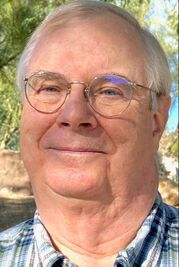 Peter Gow Peter Gow It’s summer, when many Americans are privileged to head off to visit family and old home towns or to sojourn a while among woods, water, mountains, or even deserts, happy for a few days or weeks or even months to immerse themselves in what they might even call their “happy place.” Many of us can tell of important life lessons learned when we’ve been able to connect deeply with a particular place, and some folks become very, very deeply invested in the spirit and history of their special corner of the world. As we emerge from our pandemic hidey holes back into all the parts of the world we love and take up travel once again, we urge our educator friends and family to consider how these relationships with places—all kinds of places— might be harnessed as engines for teaching and learning. There’s nothing terribly new here. “Place-Based Learning”—I like to call it PlaBL to differentiate it from the other Ps (PjBL for projects and PbBL for problems)—has been around for a while, and a few schools have really capitalized on their own locations to build academic programs around the mountains or waters near which they are situated. Some have even gone further. Our friends at University Liggett School near Detroit, Michigan, have created a truly exemplary United States History course that takes students through time through the lens of the history of its own region. Some years ago I had the good luck to have been approached by a couple of students who wanted to do an independent study, and our exploratory conversations led us to their interest in the history of their own small city. Voila! “Newton in the Revolutionary Era” was followed by “Newton in the Civil War Era,” and some interesting learning took place. Later I had a side-gig as an editor for a small regional press, and in my mind I began to translate Tip O’Neill’s maxim about politics into my own mantra: “All history is local history.” But that’s just one discipline. Plenty of important place-based learning has been done around the sciences, data-collection, and quantitative analysis. Multilingual communities and regions abound. One could argue that many of the fine arts and much literature are place-inspired, and few places are without their “local” authors and artists of note. The possibilities expand far beyond traditional academics. Local advocacy and community engagement can have transformative effects on both places and people, and I’ve even worked with one place-named school that had taken on the challenge of being THAT PLACE’s Academy, finding ways to make the school’s and its students’ presence in the community positive forces, rather than just being another aloof School On A Hill. Place-Based Learning connects students intellectually as well as emotionally to their communities and their natural environments, opening windows into history, culture, geography, politics, and current issues of equity and justice—all the ways that “place” can inspire art and beauty or serve as a kind of trap for humans and our fellow creatures. If we are seeking learning that is “relevant”—that acknowledges that students’ lives are actually being lived somewhere and that deeper understanding and responsible and equitable stewardship of these places is a human imperative—you cannot do much better than embracing PlaBL in its full expression. Like PbBL and PjBL, Place-Based Learning can free and inspire teachers and students alike to begin seeing communities and localities as classrooms, laboratories of the human experience that inspire important questions and take us on journeys toward answers whose complexity and significance transcend textbook algorithms and received truths. I believe that all three Ps—Place-, Problem-, and Project-Based Learning—are worthy of increased attention. As we become more sophisticated and creative in our independent approaches to curriculum and assessment and as we understand more deeply the role of personal experience in students’ development as learners, we cannot overestimate the possibilities of Place-Based Learning and its cousins as effective learning tools that help students understand that their place in the world is an actual place, in an actual world.
0 Comments
Leave a Reply. |
Don't miss our weekly blog posts by joining our newsletter mailing list below:AuthorsBrad Rathgeber (he/him/his) Archives
July 2024
Categories |

 RSS Feed
RSS Feed